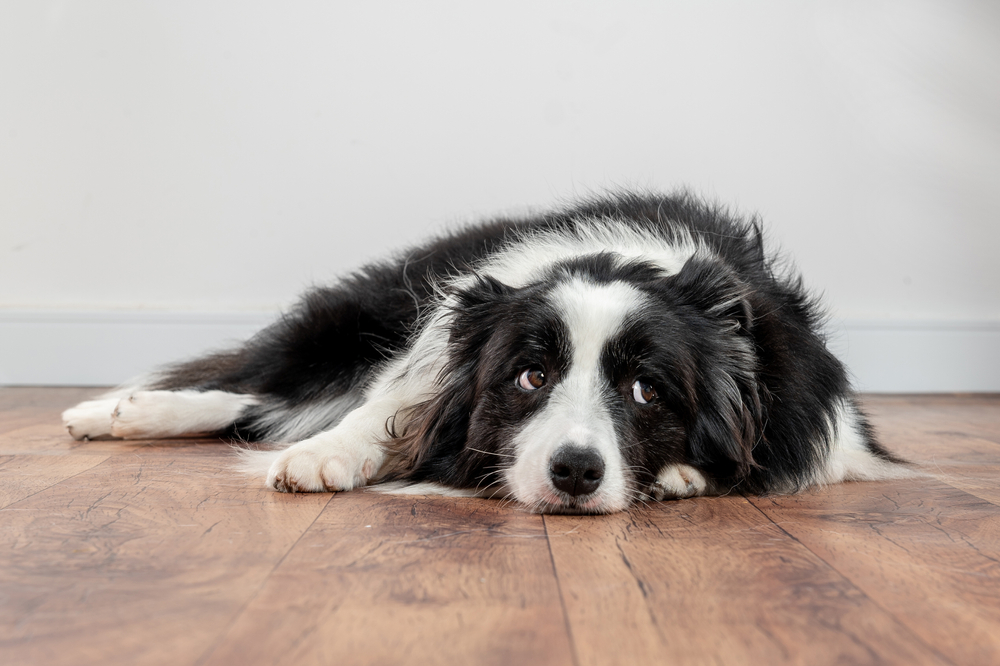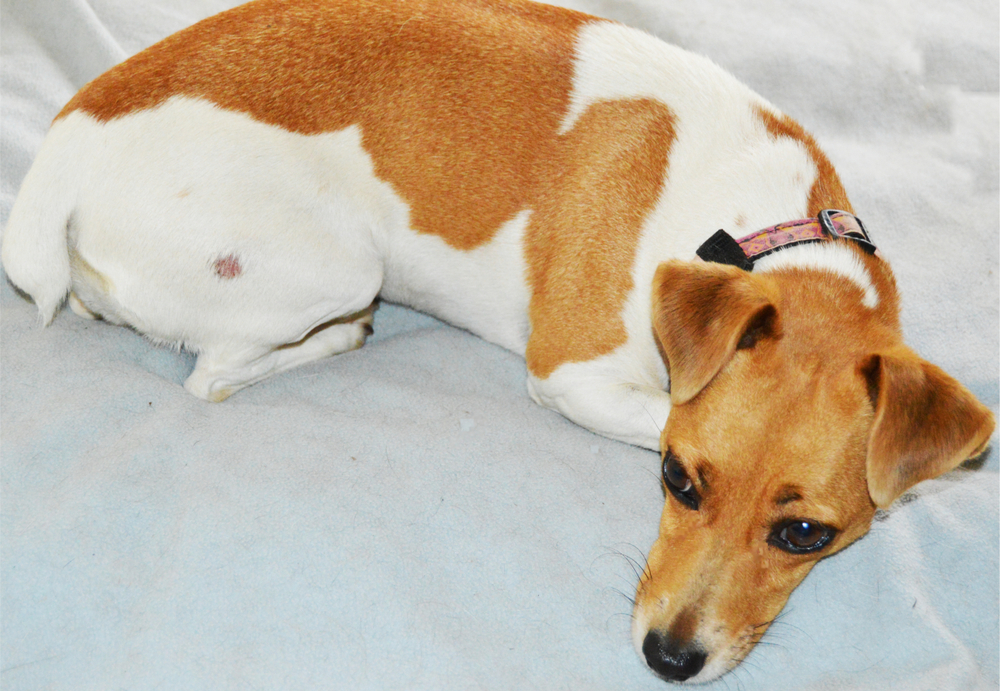Despite its name, ringworm isn’t actually a worm. This skin condition is a fungal infection that causes circular (ring-like) patches of fur loss with a crusty covering. It’s treatable—and it isn’t life-threatening—yet it can spread quickly and it requires a trip to your vet as soon as you identify something amiss with your dog. People can also catch ringworm by touching an infected dog.
We’ve got some helpful tips on how to treat ringworm, and how to keep it from spreading.
What is ringworm, and how do dogs get it?
Ringworm begins with small spores that reproduce in the outer layers of your dog’s skin, resulting in the telltale “rings” of fur loss.
Also known as dermatophytosis (caused by a type of fungi called dermatophytes), ringworm occurs on areas of broken skin. Because it’s contagious, dogs can catch it through direct contact with other animals with ringworm, but they can also catch it by digging or rolling around in dirt where infected dogs have done the same. That’s why you’ll sometimes see ringworm affect dog’s nails as well as their skin, making the nails rough and brittle (and often more yellow in color), and prone to breaking more easily. Dogs can also get ringworm by sharing contaminated objects with infected dogs, such as food or water bowls, brushes and combs, bedding, and couches. If your dog has ringworm and you have other pets at home, try to separate them while your dog is infected.
Ringworm can be transmitted to people, and it typically shows up as one or two patches of red, irritated skin. It can be more concerning for those with weakened immune systems, or for young children, where symptoms may be more severe. Regardless, if anyone in your household shows signs of skin lesions caused by ringworm, it’s important to see your doctor right away for treatment.
Note that ringworm can remain dormant on surfaces such as bedding, rugs, bowls, combs, and brushes for more than a year. That doesn’t mean you or your pet will still get infected—it depends on the amount of contamination—but it does mean you should vigorously clean and disinfect these surfaces, just to be safe. Additionally, infected fur or hairs that your dog sheds at home contain microscopic fungal spores. Consult with your vet about the best way to keep your home free of contamination while your dog has ringworm, but vacuuming and mopping floors daily is a good starting point. (And keep your infected pet off the furniture.)
What are some signs of ringworm?
- Visibly reddened areas on your dog’s skin
- Scaly, raised circular patches
- Crusty edges around areas of fur loss
- Rough and brittle nails (with a change in color)
- Excess dandruff, skin flaking
- Itchy skin
- Fur or hair loss (alopecia)
How is ringworm diagnosed and treated?
The first step in getting help for your dog is a trip to the vet, where fur or hair samples and skin scrapings will be taken and analyzed in a lab. The results should come within a few days, but if the fungal spores are slow-growing, it might take a few weeks to receive the culture results. Your vet also might want to shave small areas of your dog’s fur to reduce the potential for contamination at home.
Topical treatments, such as ointments, shampoos, and creams, are commonly used for cases of ringworm, along with oral anti-fungal medications. It is essential to adhere strictly to treatment, without pausing or stopping, unless your vet has authorized it—and that might mean administering treatments for several weeks or even months. But stick with it to avoid the recurrence of ringworm.
With appropriate treatment (most often a combination of therapies), your dog will be contagious for a few weeks. It can take much longer if vet instructions aren’t followed properly. If your dog has a weakened immune system, or if the case is particularly severe, your vet will find alternative forms of treatment. But the good news is that most dogs will recover just fine.










